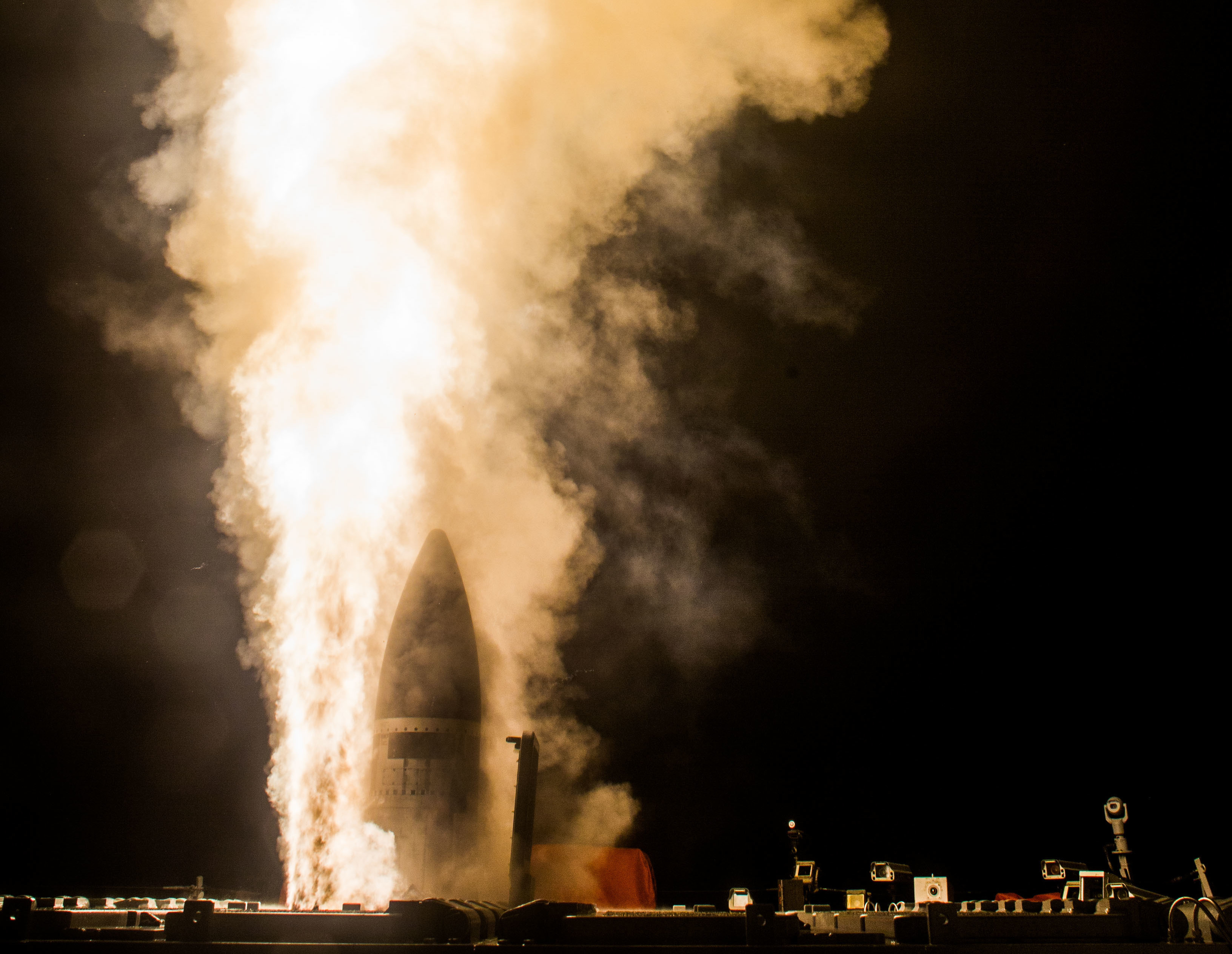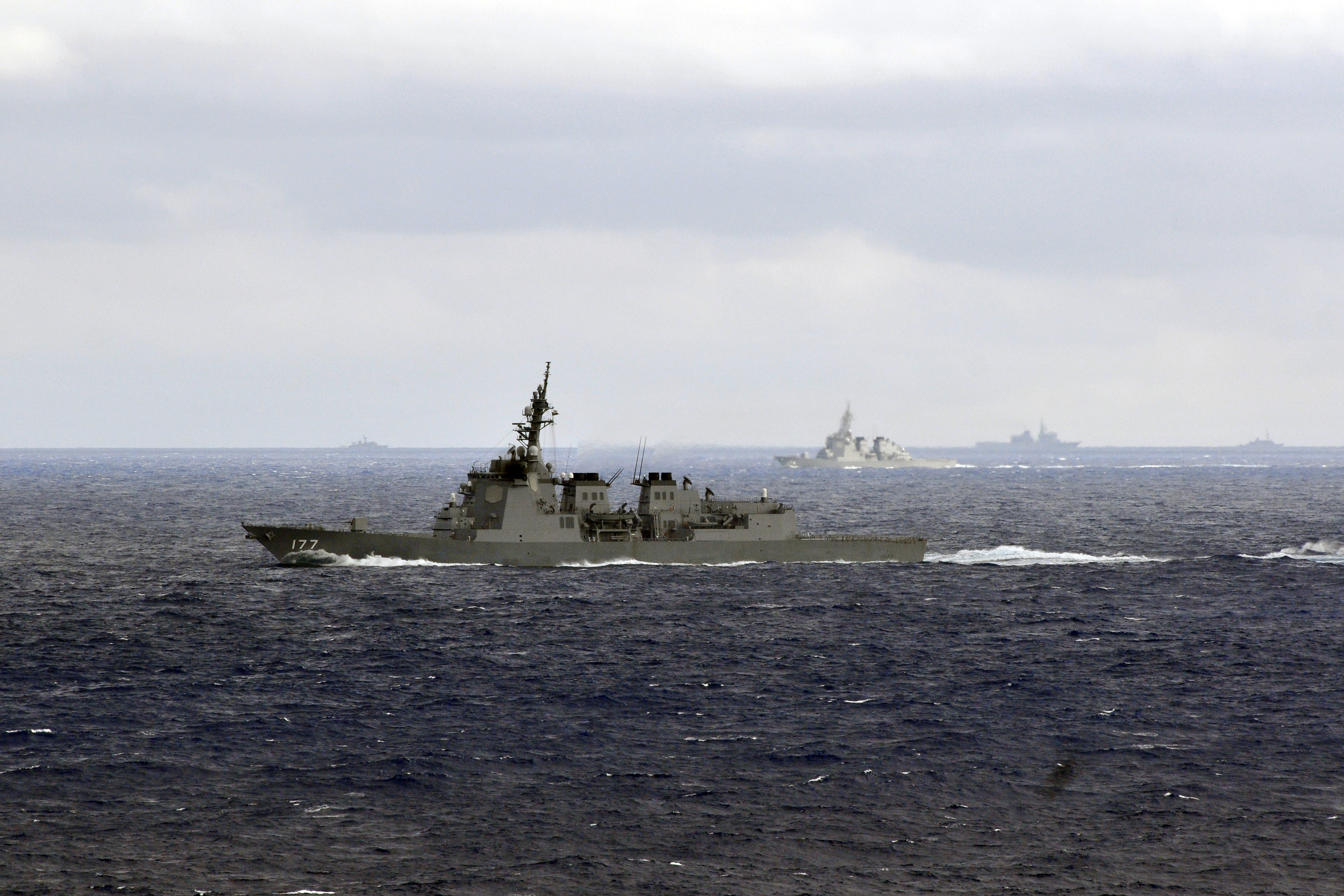
To counter immediate and growing North Korea’s nuclear weapons and missile threats, three former Japanese ministers of defense said Tokyo needs to work with Washington to enhance ballistic missile defense capabilities to better defend itself and develop an effective counterstrike if attacked.
Speaking Monday at the Center for Strategic and International Studies, a Washington, D.C., think tank, Itsunori Onodera, a Liberal Democratic Party member of the Diet, said through an interpreter, “When North Korea is going to attack? We never know.”
The flight time of a missile launched from North Korea to landing in Japan is 10 minutes, he added. In addition to already existing Aegis and PAC-3 missile defense systems in place, he suggested adding the Terminal High Altitude Area Defense system, now being introduced into South Korea to Tokyo’s defenses.
“A ready response is needed,” he said later in answer to a question. Long-range American bombers based in Guam and Hawaii would take hours to answer a North Korean attack. “We need to enhance our safety” to block a second and third strike from Pyongyang. “I think Japan is a country that does not have that capability,” and it is constitutionally acceptable to develop it.
The sense of urgency increased when Pyongyang fired four intermediate range missiles in March that landed in the waters of the Japanese exclusive economic zone.
At the time, North Korea boasted that was a test using mobile launchers, solid fuel propellant on missiles capable of being fired from a submarine to prove that it could strike American forces stationed in Japan.
If attacked by North Korea, “we would defend ourselves.” With the changes in its law covering the Self-Defense Forces, which includes defending U.S. forces.
As matters stand, Gen Nakatani, also a Liberal Democratic Party member of the Diet, said through an interpreter, “I don’t think there is (a) chance for negotiations” to eliminate North Korea’s nuclear weapons or stop its ballistic missile development programs.
The regime of Kim Jung Un uses the programs to keep itself in power.
“This is the most tense situation we’re facing since the Korean War,” and the threat is growing as North Korea works on placing a nuclear weapon on a ballistic missile.
The three agreed all options should be on the table in confronting North Korea, including a pre-emptive strike.
Akihisa Nagashima, an independent in the Diet, said in his address in English, ‘What we need here is a strategy of containment … in every domain” because North Korean “considers itself a nuclear-armed state” and is unwilling to part with those weapons. He added that strategy also meant the United States, Japan and South Korea “maintain full-spectrum dominance” to deter Pyongyang or respond if attacked.
The question to be settled among allies in negotiations is “Which one is responsible for providing the shield, which one is responsible for providing the arm.”
In answer to a question, Nakatani said, “The strategic ties between Japan and South Korea need to be tightened and strengthened,” but “whether this can be done politically” with the long-standing antagonisms between the two nations may prove too difficult. One area that could be addressed at the start and break down the antagonisms is developing an agreement on handling South Korean civilians being evacuated to Japan following a North Korean strike.

He added likewise the ties between the United States, Japan and South Korea should also be strengthened with Australia and India to counter North Korea and an expansionist China.
All parties, including Russia and China, that participated in earlier talks with North Korea on its weapons program so far publicly remain committed to a denuclearized Korean peninsula.
But how effective China will be in putting new pressure on North Korea is debatable.
Onodera noted that North Korea continued its missile tests when Vice President Mike Pence was in Asia at a time when the United States said the era of “strategic patience” with Pyongyang was over. “Kim appears not to be concerned about China.” He added that the North Korean leader has never visited Beijing or personally met its leaders. “I don’t think it is easy to make North Korea stop,” even if China no longer supplied oil to Pyongyang.
“North Korea is the immediate threat,” Nakatani said. “We should separate the two kinds of threat,” the other being the longer term China’s territorial claims in the East China Sea and militarization of its claims in the South China Sea.





